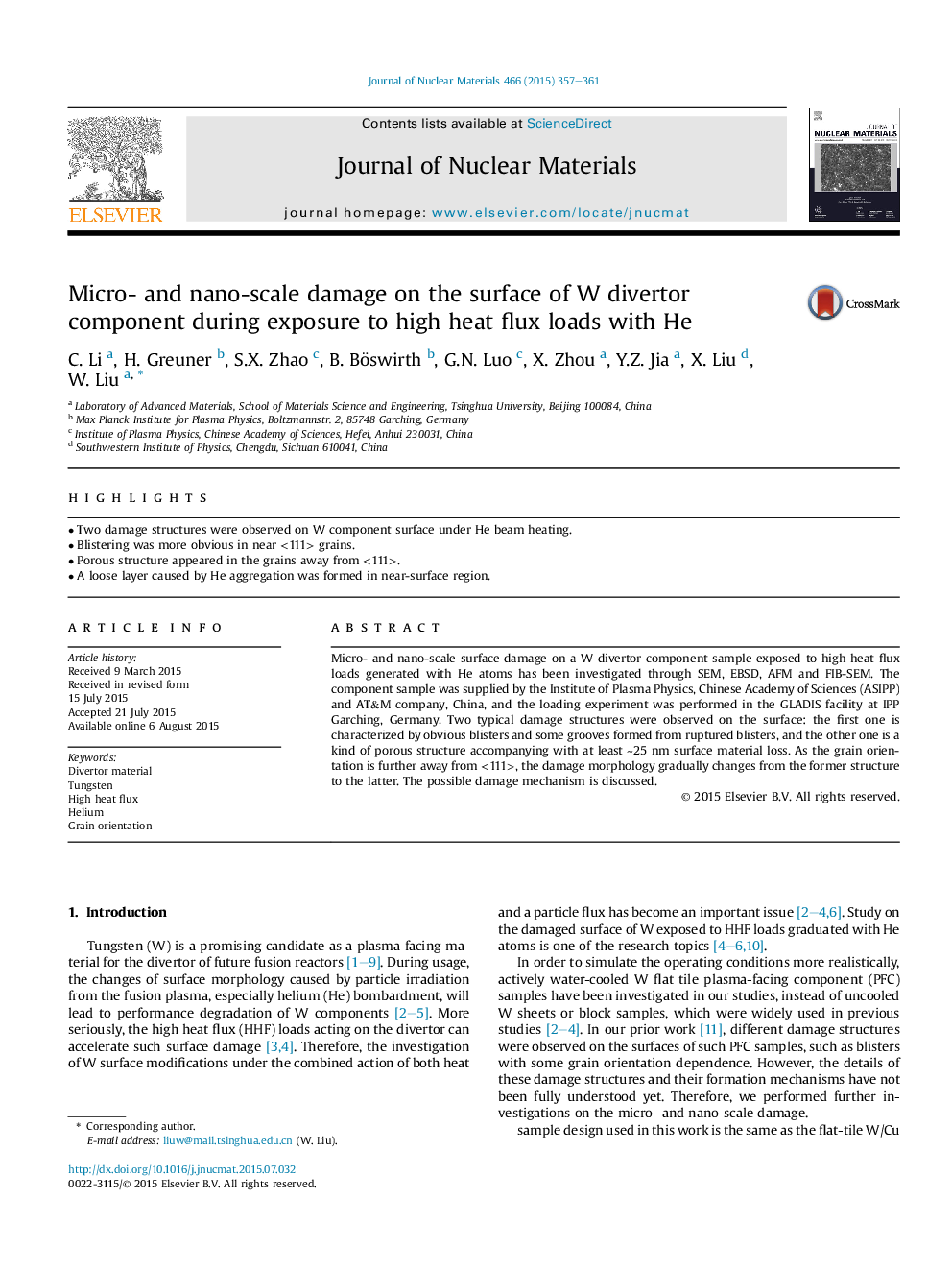| Article ID | Journal | Published Year | Pages | File Type |
|---|---|---|---|---|
| 7964911 | Journal of Nuclear Materials | 2015 | 5 Pages |
Abstract
Micro- and nano-scale surface damage on a W divertor component sample exposed to high heat flux loads generated with He atoms has been investigated through SEM, EBSD, AFM and FIB-SEM. The component sample was supplied by the Institute of Plasma Physics, Chinese Academy of Sciences (ASIPP) and AT&M company, China, and the loading experiment was performed in the GLADIS facility at IPP Garching, Germany. Two typical damage structures were observed on the surface: the first one is characterized by obvious blisters and some grooves formed from ruptured blisters, and the other one is a kind of porous structure accompanying with at least â¼25Â nm surface material loss. As the grain orientation is further away from <111>, the damage morphology gradually changes from the former structure to the latter. The possible damage mechanism is discussed.
Related Topics
Physical Sciences and Engineering
Energy
Nuclear Energy and Engineering
Authors
C. Li, H. Greuner, S.X. Zhao, B. Böswirth, G.N. Luo, X. Zhou, Y.Z. Jia, X. Liu, W. Liu,
